Current Affairs – 8 March 2024
IndiaAI Mission
Recently, the Cabinet has approved the comprehensive national-level IndiaAI mission.

About IndiaAI Mission:
- It will establish a comprehensive ecosystem catalyzing AI innovation through strategic programs and partnerships across the public and private sectors.
- It will be implemented by ‘IndiaAI’ Independent Business Division (IBD) under Digital India Corporation (DIC).
- It has the following components:
- IndiaAI Compute Capacity: It will build a high-end scalable AI computing ecosystem to cater to the increasing demands from India’s rapidly expanding AI start-ups and research ecosystem. It will comprise AI compute infrastructure of 10,000 or more Graphics Processing Units (GPUs), built through public-private partnership. It will act as a one-stop solution for resources critical for AI innovation.
- IndiaAI Innovation Centre: It will undertake the development and deployment of indigenous Large Multimodal Models (LMMs) and domain-specific foundational models in critical sectors.
- IndiaAI Datasets Platform: It will streamline access to quality non-personal datasets for AI Innovation. A unified data platform will be developed to provide a one-stop solution for seamless access to non-personal datasets to Indian Startups and Researchers.
- IndiaAI Application Development Initiative: It will promote the AI applications in critical sectors for the problem statements sourced from Central Ministries, State Departments, and other institutions.
- IndiaAI FutureSkills: It is conceptualized to mitigate barriers to entry into AI programs and will increase AI courses in undergraduate, masters-level, and Ph.D. programs. Further, Data and AI Labs will be set-up in Tier 2 and Tier 3 cities across India to impart foundational level courses.
- IndiaAI Startup Financing: It is conceptualized to support and accelerate deep-tech AI startups and provide them streamlined access to funding to enable futuristic AI Projects.
- Safe & Trusted AI: It will enable the implementation of Responsible AI projects including the development of indigenous tools and frameworks, self-assessment checklists for innovators and other guidelines and governance frameworks.
- The IndiaAI Mission will propel innovation and build domestic capacities to ensure the tech sovereignty of India.
Haiper
Recently, former members of Google’s DeepMind team, have introduced Haiper, a cutting-edge AI-powered video generation tool.
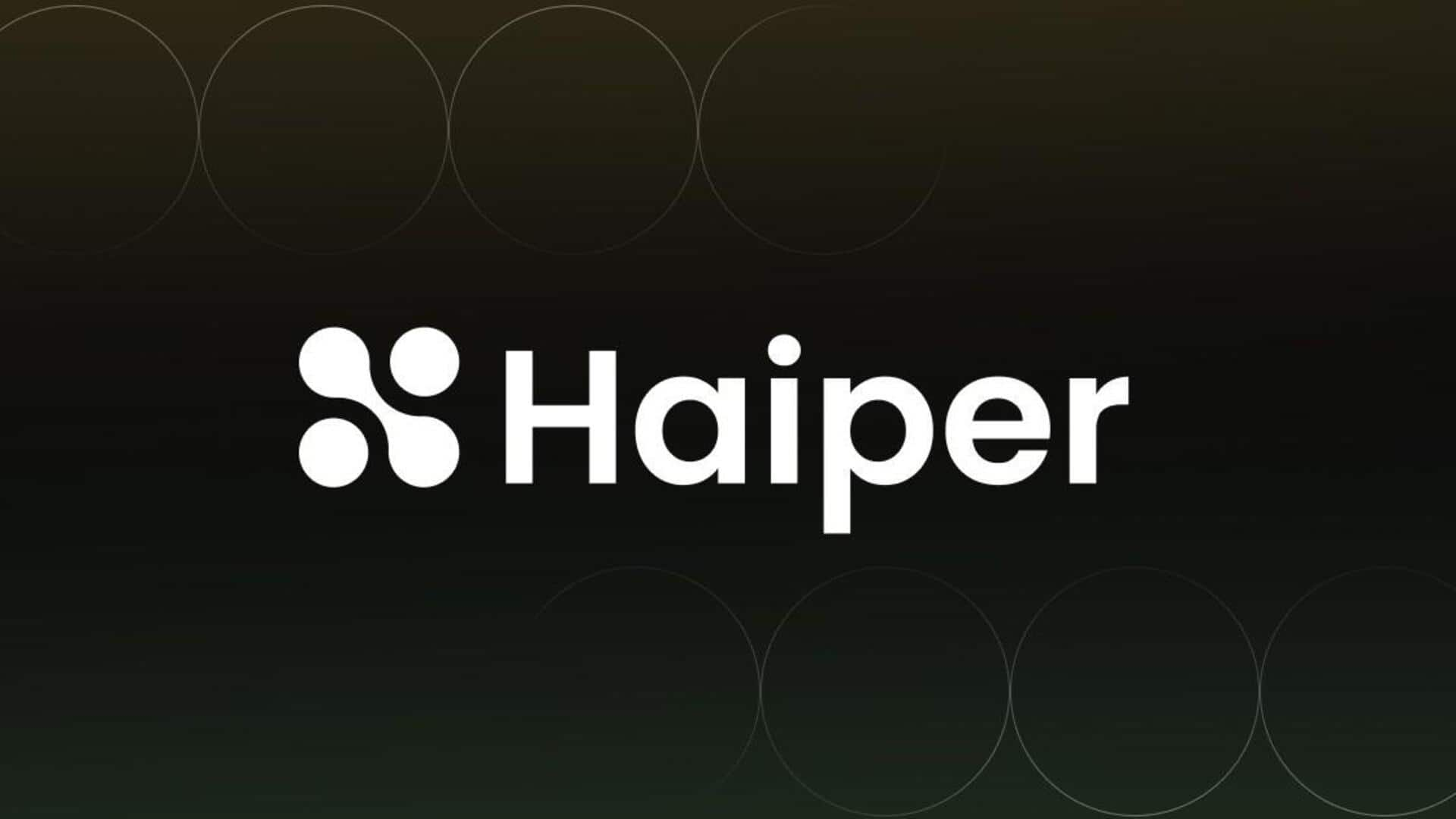
About Haiper:
- It is an all-in-one visual foundation model that allows everyone, with or without technical training, to generate high-quality video content with ease.
- According to Haiper, its model is a powerful perceptual foundation model-driven AI that has been designed for a “new path towards AGI” (artificial general intelligence, an AI software with human-like intelligence and the ability to self-learn).
- It offers tools such as text-to-video, animated static images, video repainting tools, etc. Users can go on to the website, log in with their email addresses, and start generating videos for free by typing in text prompts.
- At present, users can only generate HD video spanning 2 seconds, and a slightly lower-quality video could go up to four seconds.
Uttar Poorva Transformative Industrialization Scheme (UNNATI)
The Union Cabinet approved the proposal for Uttar Poorva Transformative Industrialization Scheme, 2024 (UNNATI – 2024).

About Uttar Poorva Transformative Industrialization Scheme (UNNATI):
- It is aimed at developing industries and generating employment in the North East Region, seeks to create productive economic activity in manufacturing and services.
- Its main objective is to generate gainful employment, leading to the overall socio-economic development of the region.
- Expenditure involved:
- This will be a Central Sector Scheme.
- It is proposed to be divided into two parts. Part, A caters to the incentives to the eligible units (Rs. 9737 crores), and Part B, is for implementation and institutional arrangements for the scheme. (Rs. 300 Crore).
- Salient features of the scheme
- Scheme period: The scheme will be effective from the date of Notification and up to 31.03.2034 along with 8 years of committed liabilities.
- Commencement of Production or operation: All eligible Industrial Units to commence their production or operation within 4 years from the grant of registration.
- Districts are categorized in two zones: Zone A (Industrially Advanced Districts) & Zone B (Industrially Backward Districts)
- Earmarking of funds:60% of the outlay of Part A has been earmarked to 8 NE states and 40% on First-In-First-Out (FIFO) basis.
- All new Industrial units and Expanding units would be eligible for the respective incentives.
- Implementation of the scheme will be overseen by the Department for Promotion of Industry and Internal Trade (DPIIT), Ministry of Commerce and Industry.
- Committees at the national and state levels, including the Steering Committee and State Level Committee, will monitor implementation, ensure transparency, and recommend registration and incentives claims.
Article 131 of the Constitution of India
Noting that it’s a State’s right to approach it under Article 131 of the Constitution, the Supreme Court (SC) recently disapproved of the Centre insisting on withdrawal of a suit filed by the Kerala Government as a pre-condition for giving consent to the State for additional borrowing.
About Article 131 of the Constitution of India:
- According to Article 131, the SC has exclusive and original jurisdiction over legal issues originating between States or between States and the Union.
- Original jurisdiction is the power of the court to hear and determine a dispute in the first instance.
- The bare reading of Article 131 states that – Original jurisdiction of the SC:
- Subject to the provisions of this Constitution, the SC shall, to the exclusion of any other court, have original jurisdiction in any dispute:
- between the Government of India and one or more States; or
- between the Government of India and any State or States on one side and one or more other States on the other; or
- between two or more States, if and in so far as the dispute involves any question (whether of law or fact) on which the existence or extent of a legal right depends.
- Subject to the provisions of this Constitution, the SC shall, to the exclusion of any other court, have original jurisdiction in any dispute:
- The nature of Article 131 is subject to provisions of the Constitution and is limited to disputes involving legal rights, as mentioned in the Article itself.
- Thus, disputes of political nature are not covered under this, unless legal rights are at stake.
- The SC held that the meaning of the word ‘State’ under Article 131 does not include any private citizen, company, or a government department, even if it had filed a complaint along with any State Governments.
- Restrictions:
- The original jurisdiction of the SC does not extend to disputes arising out of any treaty, agreement, covenant, engagement, sanad, or any other similar instrument which came into being before the commencement of the Constitution.
- The parliament may exclude the jurisdiction of the SC in disputes relating to the use, distribution, or control of the water of any inter-state river;
- Suits brought by private individuals against the Government of India.
Sea Defenders-2024
The United States Coast Guard’s (USCG) Bertholf ship reached Port Blair ahead of the ‘Sea Defenders-2024’ joint exercise.
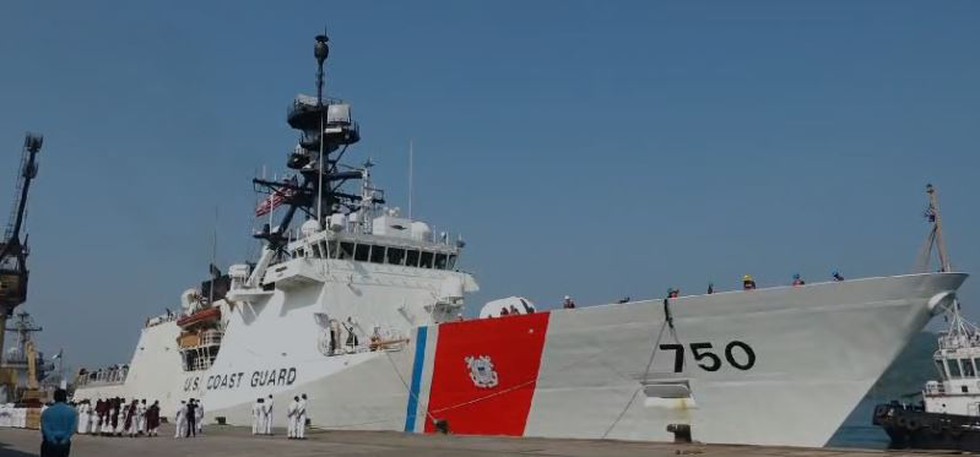
About Sea Defenders-2024:
- It is a joint exercise between the Indian Coast Guard and the United States Coast Guard.
- Location: Off the coast of Port Blair, Andaman and Nicobar Islands.
- The two-day exercise will focus on maritime piracy and asymmetric threats, including simulated drone attacks on commercial merchant traffic, joint maritime search and rescue operations, major firefighting, marine pollution response, and counter-drug interdiction exercises.
- The event will also witness a simulated medical evacuation to enhance readiness in emergency situations.
Key Facts about Indian Coast Guard (ICG):
- It is an armed force that protects India’s maritime interests and enforces maritime law, with jurisdiction over the territorial waters of India, including its contiguous zone and exclusive economic zone.
- The ICG, working in coordination with other Union agencies, institutions and authorities, safeguards the maritime interests and security of India, assists vessels and fisherman in distress and protects the maritime environment.
- History: It was formally established in 1978 by the Coast Guard Act, 1978, as an independent Armed force of India.
- Parent ministry: It operates under the Ministry of Defence.
- Administration: The organization is headed by the Director General Indian Coast Guard (DGICG).
- HQ: New Delhi.
Taeniogonalos deepaki
Entomologists have discovered a new species of wasp in the Western Ghat region of Karnataka.
About Taeniogonalos deepaki:
- It was discovered in the Belgaum region of Karnataka. The genus Taeniogonalos belongs to the family Trigonalyidae of the order Hymenoptera.
- The Trigonalyidae family consists of a type of insects called hyperparasitoids that “sneak into” parasitoids or insects whose larvae develop on or within the bodies of other insects.
- Distribution: The Taeniogonalos genus is distributed in Afrotropical, oriental, eastern palaearctic, nearctic, Australian and neotropical regions; 6 of the species have been reported earlier from India and 20 from China.
- Most of the Taeniogonalos species have been reported from south India.
What is a parasitoid?
- It is an organism that has young that develop on or within another organism (the host), eventually killing it. They have characteristics of both predators and parasites.
National Cooperative Database (NCD)
Union Minister of Cooperation will launch the National Cooperative Database (NCD) to foster a cooperative-centric economic model.

About National Cooperative Database (NCD):
- It is an initiative of the Ministry of Cooperation which had recognized the imperative need for a robust database to capture vital information about India’s vast cooperative sector.
- NCD has been developed in collaboration with State Governments, National Federations and stakeholders, and aims to foster a cooperative-centric economic model.
- It is a web-based digital dashboard wherein data of cooperative societies, including National/State Federations have been captured.
- The data of cooperative societies has been entered and validated by States/ UTs nodal officials at RCS/ DRCS offices, and the data of federations has been provided by various national/state federations.
- The information collected from cooperative societies are on various parameters, such as their registered name, date, location, number of members, sectoral information, area of operation, economic activities, financial statements, status of audit etc.
- NCD serves as a crucial tool for efficient communication between the Central Ministry, States/UTs, and Cooperative Societies, benefiting all stakeholders in the cooperative sector.
- NCD offers a myriad of benefits, including:
- Single-point access
- comprehensive and updated data
- user-friendly interface
- vertical and horizontal linkages
- query-based reports and graphs
- Management Information System (MIS) reports
- data analytics
- Geographical Mapping.
School Soil Health Programme
Recently, the Union Minister for Agriculture & Farmers’ Welfare and Union Minister for Rural Development inaugurated School Soil Health Programme.
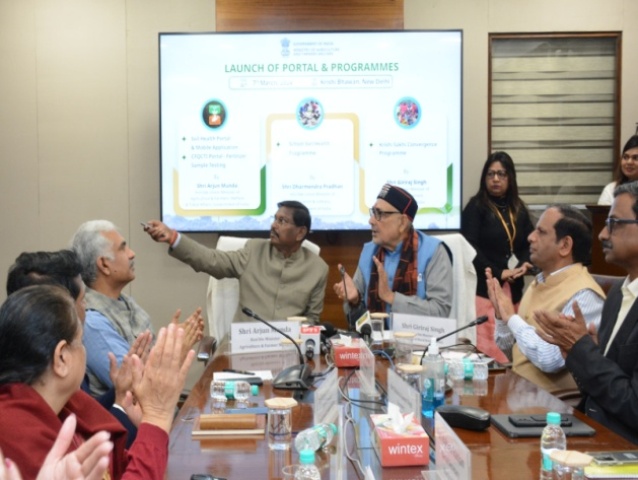
About School Soil Health Programme:
- Department of Agriculture and Farmers welfare in collaboration with Department of School Education and Literacy has undertaken a pilot project on school soil health programme.
- Features
- Under the project, 20 soil labs were set up in 20 schools of Kendriya and Navodaya Vidylaya of rural areas. Study modules were developed and training was given to students and teachers.
- Mobile application was customized for the school programme and portal is having a separate segment for the programme where in all the activities of students has been documented.
- Kendriya Vidyalya, Navodaya Vidyalya and Eklavya Model Schools have been taken under this programme. Schools are being onboarded on the portal and online batches are being created.
- Department of Agriculture and Farmers welfare (DA&FW) through National Bank for Agriculture and Rural Development (NABARD) will setup soil labs in these schools.
- School students will collect soil samples, test in the labs set up in schools and generate Soil health Card.
- After generating Soil Health Card, they will go to the farmers and educate them about recommendation of Soil health Card.
- Significance
- It will provide students with the chance to conduct experiments, analyze soil samples, and explore the fascinating biodiversity within the soil.
- By engaging in practical activities, students will develop critical thinking skills, problem-solving abilities and a holistic understanding of the interconnectedness of ecosystems.
Dolutegravir (DTG)
Resistance to the antiretroviral drug dolutegravir (DTG) is increasing among HIV patients, a new report by the World Health Organization (WHO) highlighted.
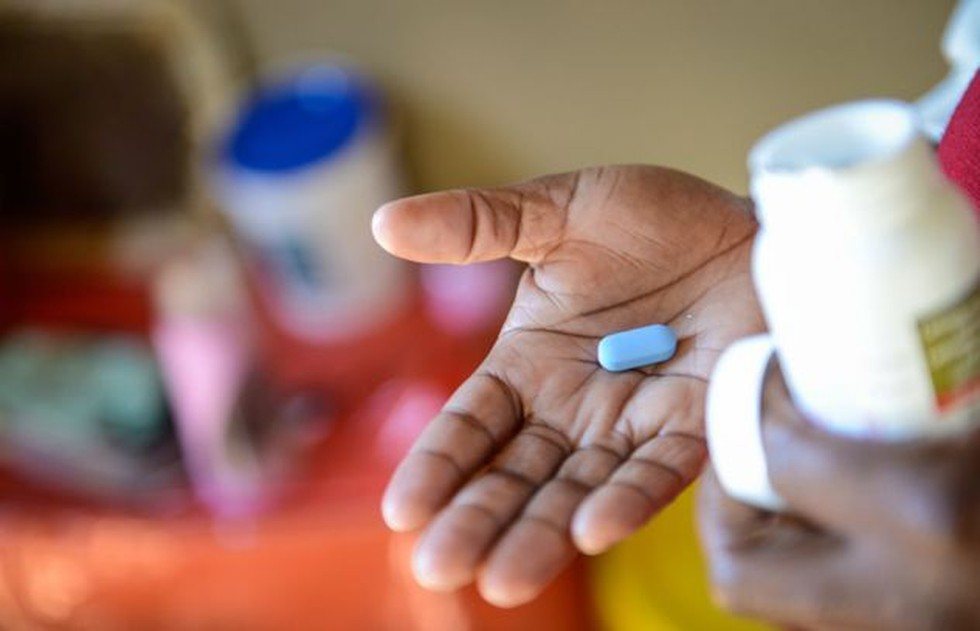
About Dolutegravir (DTG):
- It is an antiviral drug used with other medications to treat human immunodeficiency virus (HIV) infection, the virus that can cause the acquired immunodeficiency syndrome (AIDS).
- Dolutegravir is in a class of medications called HIV integrase inhibitors. It works by decreasing the amount of HIV in your blood and increasing the number of immune cells.
- Although dolutegravir does not cure HIV, using it along with other medications may decrease your chance of developing AIDS and HIV-related illnesses such as serious infections or cancer.
- WHO has recommended the use of dolutegravir as the preferred first- and second-line HIV treatment for all population groups.
- It is more effective, easier to take and has fewer side effects than other drugs currently in use.
- Common side effects of dolutegravir may include:
- headache;
- tiredness; or
- sleep problems (insomnia).
- Some side effects can be serious. These include severe skin rashes and allergic reactions, liver problems, and drug interactions.
What is HIV/AIDS?
- AIDS is a chronic, potentially life-threatening condition caused by HIV.
- HIV attacks the body’s immune system, making a person more vulnerable to other infections and diseases.
- If HIV is not treated, it can lead to AIDS.
- Transmission:
- It is a sexually transmitted infection (STI).
- It can also be spread by contact with infected blood, and from illicit injection drug use or by sharing needles.
- It can also be spread from mother to child during pregnancy, childbirth, or breastfeeding.
- Treatment:
- There is currently no effective cure. Once people get HIV, they have it for life.
- But with proper medical care, HIV can be controlled. People with HIV who get effective HIV treatment (called antiretroviral therapy, or ART) can live long, healthy lives and protect their partners.
State Specific Disaster
Kerala declares man-animal conflict a state-specific disaster, becoming the 1st state in the country to do so.

- In Kerala – This announcement is due to Man-Elephant conflict which had claimed lives of many people.
| Human – Animal Conflict |
|
- State specific Disaster – They are ‘disasters’ within the local context in the State and which are not included in the notified list of disasters of the Ministry of Home Affairs.
- Announced by – State Government.
- Funding mechanism – State Disaster Response Fund (SDRF).
- A State Government may use up to 10% of the funds available under the SDRF for providing immediate relief to the victims
- Responsible authority – State disaster management authority (SDMA) as per the Disaster Management Act 2005.
- At the state level – The Chief Minister is the ex officio chairman of the SDMA.
- In the districts – The district disaster management authority (DDMA) is headed by the district collector.
- Powers – SDMA can take actions overriding other norms, including those under the Wildlife Protection Act.
- Section 71 of the DM Act – No court (except the Supreme Court or a High Court) shall have jurisdiction to entertain any suit or proceeding in respect of anything done by relevant authorities in pursuance of any power conferred by this Act.
- Section 72 of the Act – The provisions of this Act will have an overriding effect on any other law during the specific period.
- Coverage – It includes natural disasters like Cyclone, drought, earthquake, flood among others and also human-animal conflicts like snakebite.
| State specific Disasters | Declared State |
| Snakebite | Odisha |
| Lightning | Odisha, Kerala & Assam |
| Coastal Erosion | Kerala |
| Soil Piping | |
| Strong Wind | |
| Heat waves, Sunburn and Sunstroke |
International Women’s Day
Globally, March 8th is celebrated annually as International Women’s Day.
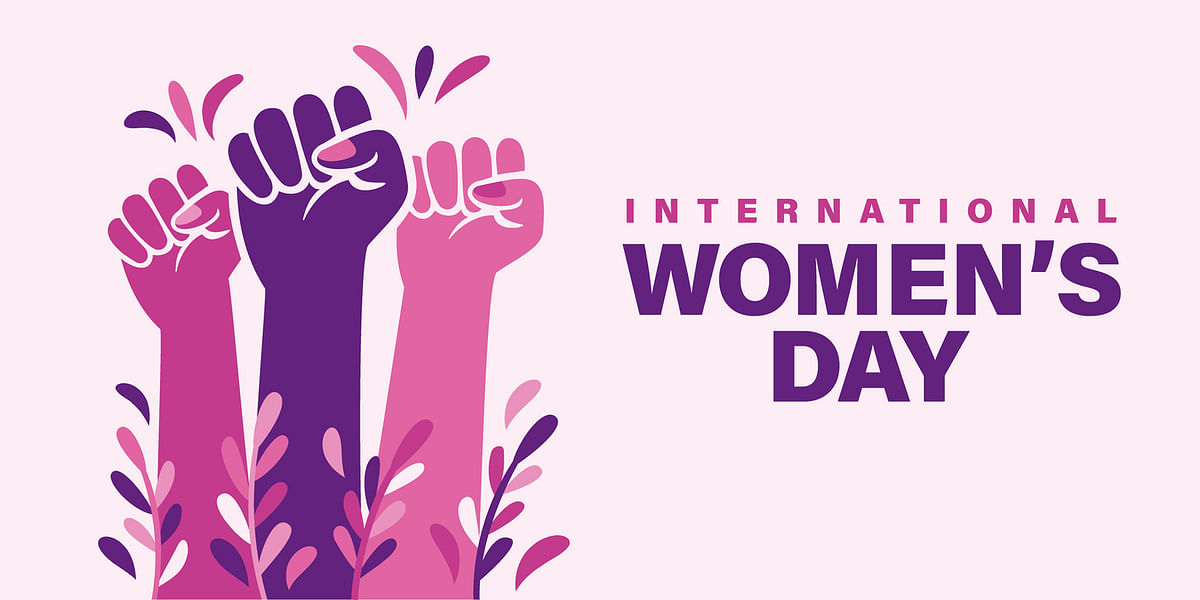
- International Women’s Day – A global day acknowledging the social, economic, cultural, and political achievements of women.
- It also highlights the ongoing struggles for equality and the need for continued action worldwide for accelerating gender parity.
- History – Women’s day originated from the labour movements in North America and Europe in the early 20th century.
- Ms. Clara Zetkin proposed the concept in 1910 at International Women’s Conference in Copenhagen.
- 1st International Women’s Day was celebrated in 1911.
- United Nations
- It celebrated its 1st official International Women’s Day on 8th March during International Women’s Year in 1975.
- In 1977, UN General Assembly (UNGA) formalizes and proclaimed the UN Day for Women’s Rights and World Peace.
- Significance of the Day – It lies in its ability to bring attention to issues such as gender equality, reproductive rights, and violence and abuse against women.
- It provides a platform for collective action and collaboration in advocating for women’s rights and empowerment.
Women’s Day 2024 – UN
- Theme – ‘Invest in Women: Accelerate Progress’ with a focus on addressing economic disempowerment.
- Campaign theme – ‘Inspire Inclusion.’
- 5 key areas needing joint action
- Investing in women, a human rights issue
- Ending poverty
- Implementing gender-responsive financing
- Shifting to a green economy and care society
- Supporting feminist change-makers
- Significance – It recognises the importance of diversity and empowerment in various spheres of society and underscoring the pivotal role of inclusion in advancing gender equality.
Indian Armed Forces to Conduct Mega ‘Bharat-Shakti’ Exercise in Jaisalmer
The three forces of India – Army, Navy, and Air Force – are going to conduct the biggest exercise called ‘Bharat-Shakti’ at Asia’s largest field firing range located in Jaisalmer district of Rajasthan. PM Modi’s Likely Visit Prime Minister Narendra Modi may visit Pokhran on March 12, 2024, to witness this show of strength by the Indian Armed Forces.
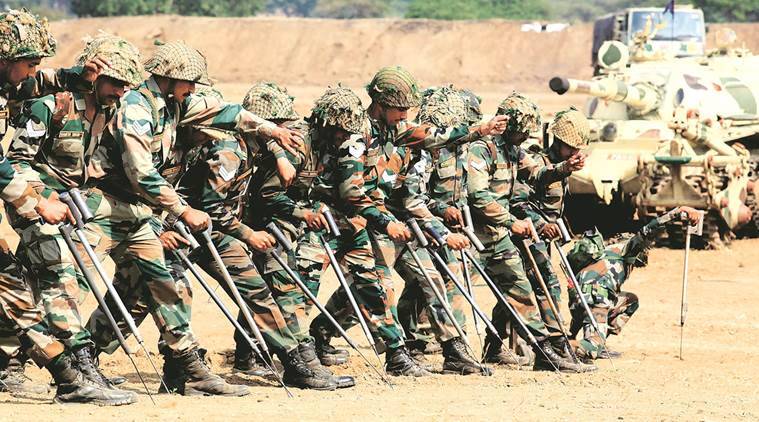
Showcasing Combined Capabilities
- Bharat Shakti is a significant tri-Service exercise showcasing the firepower of the Army, Air Force, and Navy.
- The three Indian Services will showcase the capability of indigenously manufactured weapons and platforms during the exercise.
- Only indigenous weapon systems developed in India will be included in this exercise.
Participation of Top Military Leaders Top officers of the three forces, including Chief of Defense Staff General Anil Chauhan, will participate in the Bharat-Shakti exercise to be held on March 12 in Pokhran.
Showcasing Indigenous Capabilities
- The concept of a self-reliant India will be demonstrated during this exercise.
- Indigenous defense platforms and network-based systems developed in India will be tested.
- The exercise will reveal the capability of indigenous weapons and equipment.
Major Indigenous Weapons- Some of the major indigenous equipment to be included in the ‘Bharat Shakti’ exercise are:
- Tejas fighter plane
- K-9 artillery gun
- Indigenous drones
- Pinaka Multi-Barrel Rocket Launchers
- Short-range missiles
Testing Communication Networks
- The capability of indigenous communication and network systems will be tested during the Bharat-Shakti exercise.
- It will assess whether enemy countries can hack these systems in case of war.
Joint Operations The exercise will provide an opportunity for all three armed forces to work together, as they generally operate differently.
Emphasis on Indigenization
- The Indian Army has become 100 percent indigenous.
- The Indian Government is now emphasizing on indigenizing the Indian Navy and Air Force as well.
- The Central Government aims to utilize indigenous technology in submarine construction and aircraft engine manufacturing to achieve self-reliance.
Sansad Khel Mahakumbh 3.0 Inaugurated in Bilaspur, Himachal Pradesh
Union Minister Anurag Singh Thakur grandly inaugurated the Sansad Khel Mahakumbh 3.0 at the Luhnu Cricket Ground in Bilaspur on March 5, 2024. Chief Guests Indian cricket team captain Rohit Sharma and Indian cricket team coach Rahul Dravid graced the occasion as chief guests.
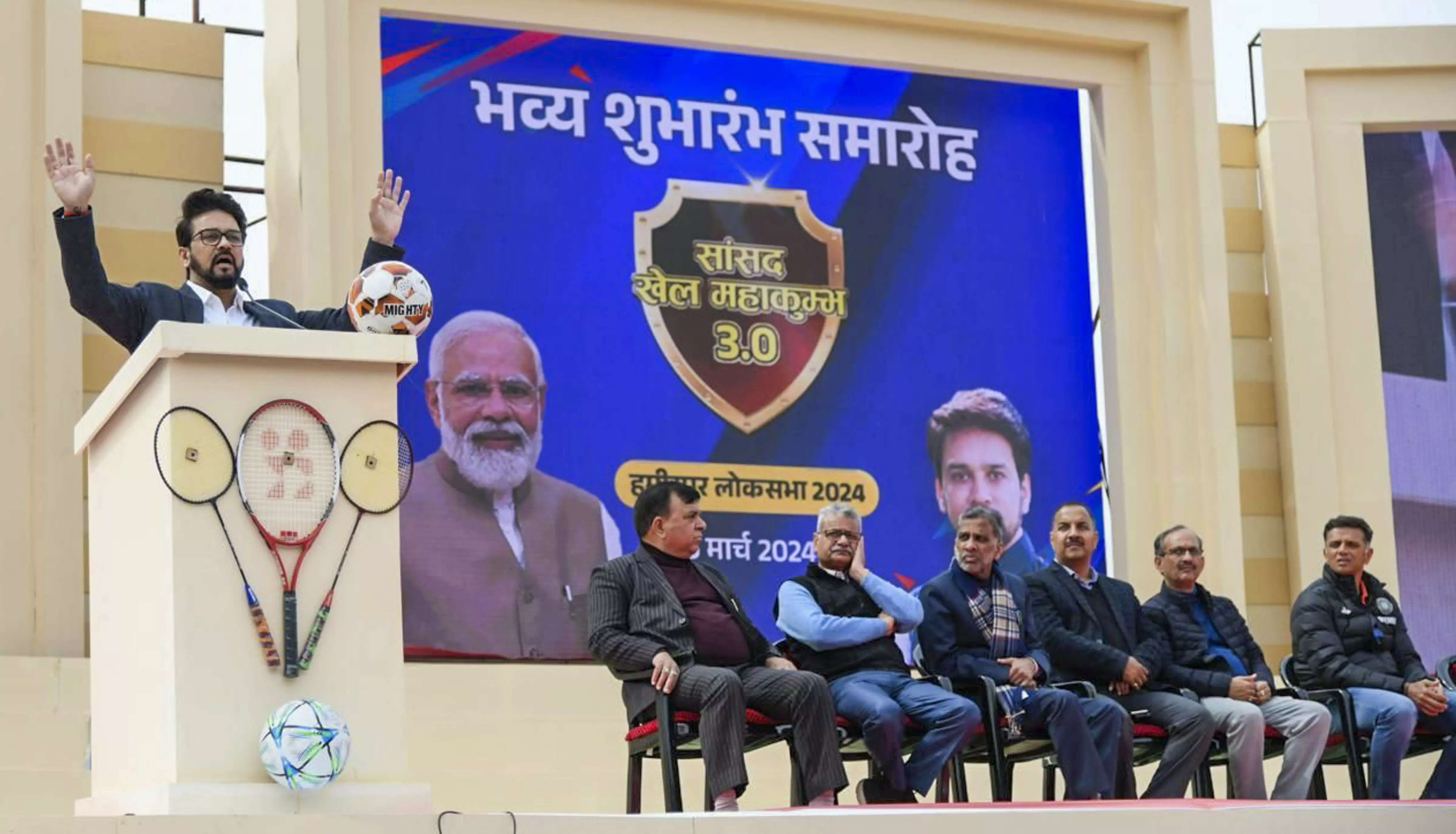
Inspiration from PM Modi’s ‘Kheloge Toh Khiloge’
- Anurag Thakur cited Prime Minister Narendra Modi’s ‘Kheloge Toh Khiloge’ as the inspiration for organizing the grand event of Mahakumbh.
- The MP Khel Mahakumbh has become the biggest platform for players from the Hamirpur parliamentary constituency to showcase their talent.
75,000 Players to Participate
- After its two successful editions, Sansad Khel Mahakumbh 3.0 was inaugurated at the Luhnu Cricket Ground in Bilaspur.
- In the first edition, 40,000 people participated, while the second edition saw 45,000 participants.
- The target for the third edition is the participation of 75,000 players.
300 MP Games Organized Across the Country
- Inspired by PM Modi, about 300 MPs across the country are organizing MP Khel Mahakumbh in their respective areas.
- The popularity of MP Khel Mahakumbh is such that the youth are staying away from drugs and pursuing careers in sports.
Sports Included
- This time, volleyball, kabaddi, cricket, basketball, and athletics have been included in the Khel Mahakumbh.
- Village/Panchayat level teams will participate in all sports disciplines.
- To promote gender equality, separate categories will be created for boys and girls.
About MP Khel Mahakumbh
- It was launched in 2018.
- In the first Sansad Khel Mahakumbh 1.0, more than 1400 teams and 42,700+ youth showcased their talents in various sports. Over Rs 20 lakh in prize money was awarded.
Second MP Khel Mahakumbh 2.0
- The second edition was organized in Basti, Uttar Pradesh, in 2023.
- PM Modi inaugurated it through video conferencing on January 18, 2023.
- More than 2300 teams and 45,700+ youth participated, including over 1000 girls.
- 7 sports disciplines were included, with participants from over 800 panchayats and 5000+ villages. Over Rs 50 lakh in prize money was awarded.
Government Approves Dearness Allowance Hike and Other Benefits for Employees and Pensioners
The Union Cabinet has sanctioned a 4% increase in Dearness Allowance (DA) and Dearness Relief (DR) for central government employees and pensioners, effective from January 1. This decision aims to benefit over 10 million employees and 6.79 million pensioners, with a combined impact on the exchequer of Rs 12,869 crore annually.
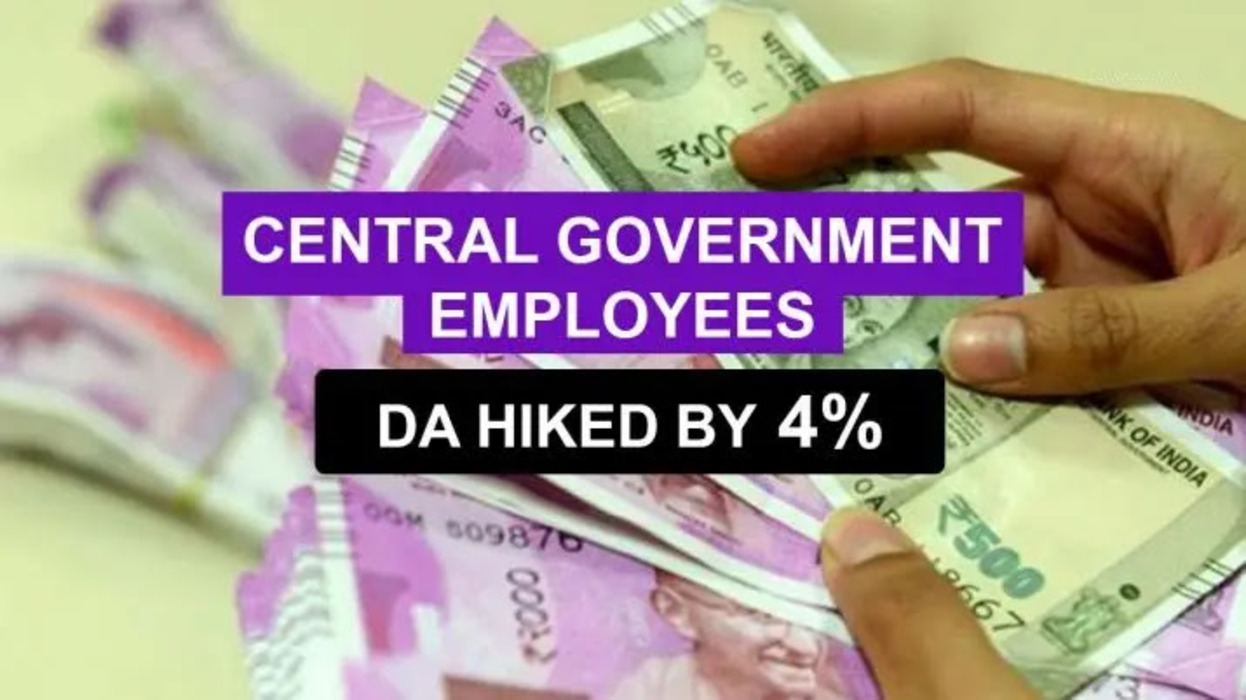
Key Points
1. Dearness Allowance Hike:
- The Union Cabinet has approved a 4% increase in Dearness Allowance (DA) and Dearness Relief (DR).
- The DA and DR will rise from 46% to 50% of the basic pay/pension, effective from January 1, 2024.
- This hike will result in an additional expenditure of Rs 12,869 crore annually.
2. Arrears and Effective Date:
- The enhanced DA of 50% of basic pay will be effective from January 1, 2024.
- Central Government Employees and pensioners will receive arrears, if applicable.
3. Increase in Allowances:
- Transport allowance, canteen allowance, and deputation allowance will see a 25% increase.
- House Rent Allowance (HRA) has been raised for various categories, with percentages rising to 30%, 20%, and 10% respectively.
4. Gratuity Benefits:
- Gratuity benefits have been raised by 25%, with the ceiling increased to Rs 25 lakh from the existing Rs 20 lakh.
5. Beneficiaries:
- Approximately 49.18 lakh employees and 67.95 lakh pensioners will benefit from these revisions.
6. Exchequer Impact:
- The combined impact on the exchequer, including both Dearness Allowance and Dearness Relief, would be Rs 12,869 crore per annum.
- For the fiscal year 2024-25 (January 2024 to February 2025), the impact is estimated to be Rs 15,014 crore.
|
Other Important Topics |
|
| “Sea Defenders-2024” | |
Sea Defenders-2024 exercise is scheduled to take place off the coast of Port Blair, Andaman & Nicobar Islands
|
|
| Pritzker Architecture Prize | |
Japanese architect Riken Yamamoto was recently declared as the winner of the 2024 Pritzker Architecture Prize.
|
|
| Bengaluru’s driverless metro train | |
|
|
| Haiper | |
|
|
| Sweden in NATO | |
|
|
| Taeniogonalos deepaki | |
Entomologists of the Ashoka Trust for Research in Ecology and the Environment have discovered a new species of wasp in the Western Ghat region of Karnataka.
|
|
| Dege Hydropower Dam Project | |
|
|
| Assam’s Tourist Police | |
Assam state’s tourism department has devised a plan to implement a ‘tourist police’ initiative recently.
|
|
| Artificial reef | |
For the first time in Maharashtra, Mumbai is set to witness the installation of 210 artificial reefs in the Arabian Sea, near Worli Koliwada.
|
|
| Voyager 1 | |
|




